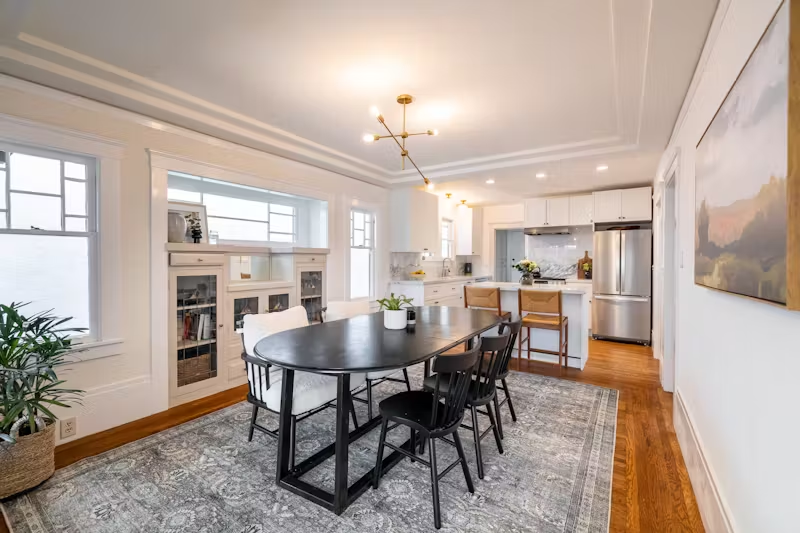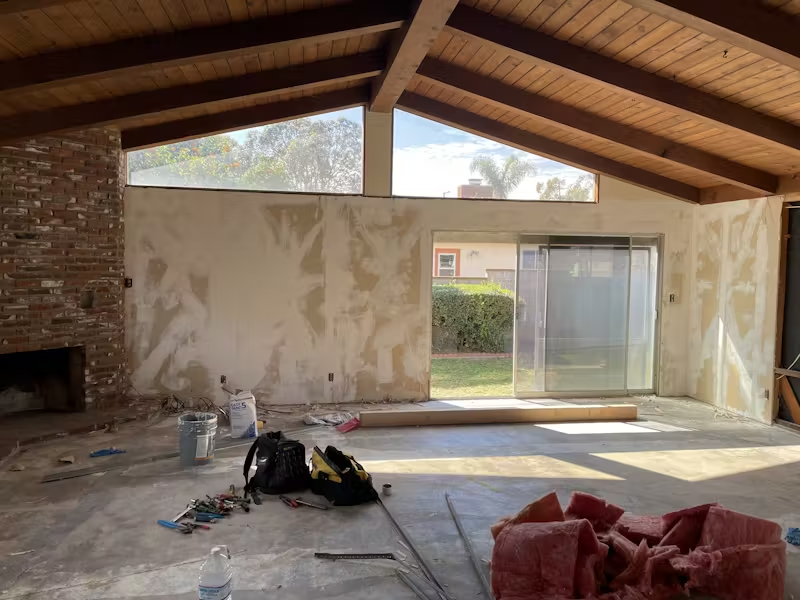How to Find the Best Kitchen & Bath Remodeling Contractors
Find trusted kitchen and bath remodeling contractors with these expert tips on vetting, qualifications, budgeting, and building a successful partnership.
|
October 27, 2025
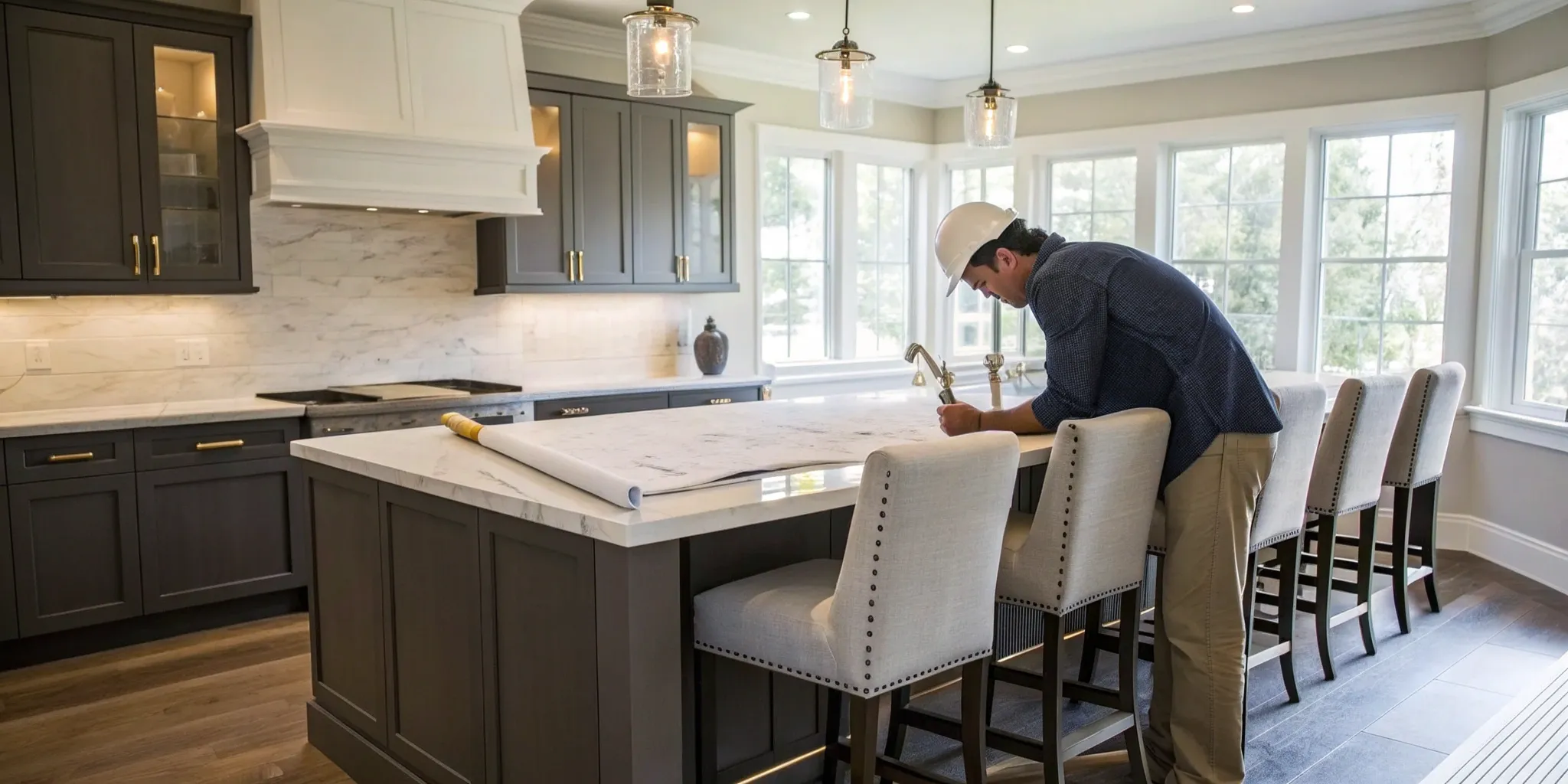
In this article:
When you start a major remodel, you’re not just hiring someone to do a job; you’re inviting a team of people into your home for weeks or even months. This relationship is a true partnership, and it requires trust, clear communication, and a shared understanding of the final goal. Choosing a contractor is less like a transaction and more like hiring a key collaborator for a deeply personal project. That’s why finding the right fit is so essential. We’ll show you how to look beyond the portfolio and bids to find kitchen and bath remodeling contractors who are not only skilled but are also great partners, ensuring the entire process feels collaborative and respectful from the first conversation to the final walk-through.
Key Takeaways
- Do Your Homework Before Hiring a Pro: The success of your project hinges on choosing the right contractor. Go beyond online reviews by verifying their state license and insurance, calling their recent references, and carefully reviewing their portfolio to ensure their work quality meets your standards.
- Put Everything in the Contract: A detailed contract is your best tool for preventing misunderstandings. Before signing, confirm it includes a complete scope of work, a milestone-based payment schedule, a formal process for change orders, and specific warranty terms.
- Be an Active Partner in Your Project: A smooth remodel is a collaboration. Establish a clear communication plan from the start, address any issues as they arise, and conduct a thorough final walk-through to create a punch list before releasing the final payment.
Why Hire a Pro for Your Remodel?
Let’s be honest—the idea of a DIY kitchen or bath remodel can be tempting. You watch a few home improvement shows, scroll through Pinterest, and think, "I can do that." But these projects are notoriously complex, with dozens of moving parts, from plumbing and electrical to tiling and cabinetry. One small mistake can lead to costly repairs and major headaches. This is where a professional contractor comes in.
Hiring a pro isn't just about getting the work done; it's about having an expert guide you through a complicated process. Think of them as your project partner, responsible for turning your vision into a functional, beautiful reality while managing the chaos behind the scenes. They bring years of experience, a network of trusted subcontractors, and an understanding of the technical details you might not even know exist. A great contractor ensures your project stays on track, on budget, and up to code. At Realm, we connect you with vetted local professionals who can handle every detail, so you can focus on the exciting parts of your renovation.
Get Expert Design and Planning
A professional contractor does more than just swing a hammer—they offer invaluable design and planning expertise. They can look at your space and see possibilities you might have missed, suggesting layouts that improve flow or materials that fit your lifestyle. For specialized areas like kitchens and baths, some pros even hold certifications from organizations like the National Kitchen & Bath Association (NKBA), which means they have proven experience in creating functional and stylish designs. They’ll help you create a detailed plan that covers everything from the placement of outlets to the type of grout, ensuring the final result is exactly what you dreamed of.
Let Them Manage the Project
A renovation involves coordinating a small army of specialists: plumbers, electricians, painters, tilers, and cabinet installers, just to name a few. A professional contractor acts as your single point of contact and project manager, handling all the scheduling, communication, and quality control. They make sure the right people show up at the right time with the right materials, preventing delays and ensuring every part of the job is done correctly. This frees you from the stressful and time-consuming task of managing multiple subcontractors yourself. It’s one of the biggest reasons homeowners choose to work with Realm; our dedicated advisors help keep everything running smoothly.
Handle Codes and Permits Correctly
Getting through building codes and permit requirements is one of the most challenging parts of any remodel. These regulations vary by city and are in place to ensure your home is safe and structurally sound. A professional contractor is well-versed in local codes and will handle the entire permitting process for you, from submitting the initial paperwork to scheduling final inspections. This not only saves you from a bureaucratic nightmare but also protects you from potential fines, legal issues, or being forced to tear out unpermitted work. By hiring a pro, you can rest easy knowing your project is fully compliant.
Secure Quality Work and a Warranty
When you hire a licensed and insured contractor, you’re investing in quality craftsmanship and accountability. Professionals stand by their work and often provide a warranty that covers labor and materials for a set period. This is your safety net. If a cabinet door comes loose or a tile cracks a few months after the project is finished, your contractor will come back and fix it. This peace of mind is something you simply don't get with a DIY project or by hiring an unlicensed handyman. It’s a guarantee that your significant financial investment is protected for years to come.
Find the Right Kitchen and Bath Contractor
Finding the right contractor is the most critical step in your renovation journey. This is the person or team you’ll be trusting with your home, your budget, and your vision. A great partnership leads to a smooth process and a beautiful result, while the wrong one can cause endless stress. The key is to do your homework upfront. By knowing where to look, what to ask, and which red flags to watch out for, you can confidently choose a professional who will bring your dream kitchen or bath to life. Taking the time to vet your options thoroughly will save you from potential headaches and costly mistakes down the road.
Know Where to Look
Start your search by casting a wide net. Ask friends, family, and neighbors for personal recommendations—a referral from someone you trust is often the best place to begin. Online platforms like Houzz and the National Kitchen & Bath Association (NKBA) also have directories where you can find local professionals and see their work. While these sites are great for inspiration, the sheer number of options can be overwhelming. That’s why working with a service that provides vetted professionals can simplify the process, connecting you directly with reliable contractors who have already been screened for quality and reliability.
Check Reviews and References
Once you have a shortlist of potential contractors, it’s time to dig deeper. Online reviews on sites like Yelp, Google, and Houzz offer a glimpse into other homeowners' experiences. Look for patterns in the feedback—are they consistently praised for their communication, timeliness, and craftsmanship? Don’t stop there. Ask each contractor for a list of recent references and actually call them. Hearing directly from past clients about their experience is invaluable. Ask about how the contractor handled challenges, stuck to the budget, and communicated throughout the project. This step gives you a much clearer picture of what it’s like to work with them.
Ask These Questions in the Interview
Treat the interview process like you’re hiring for an important job—because you are. Prepare a list of questions to ask each candidate to ensure you’re making an informed decision. Start with the basics: Are you licensed and insured in my city? Can you provide proof? Then, move on to their process. Ask about who will be the main point of contact, how they handle project changes, and what their typical payment schedule looks like. It’s also a good idea to ask about their warranty on labor and materials. A professional contractor will have clear, confident answers to these questions.
Spot These Red Flags
Just as important as knowing what to look for is knowing what to avoid. Be wary of any contractor who gives you a vague estimate, pressures you to sign a contract immediately, or asks for a large upfront cash payment. An unusually low bid can also be a major red flag, often signaling inexperience or an intention to cut corners with cheaper materials. Another warning sign is poor communication; if they are difficult to get a hold of during the bidding process, imagine what it will be like once they have your deposit. Trust your gut—if something feels off, it probably is.
Look for These Essential Qualifications
Once you’ve narrowed your list to a few promising contractors, it’s time to dig deeper into their qualifications. This step is about moving beyond first impressions and verifying that they have the credentials to back up their claims. A great kitchen and bath remodel depends on more than just a good design—it requires a professional who is licensed, insured, and truly an expert in their field. Think of these qualifications as your safety net. They ensure a baseline of quality and protect you from potential financial and legal issues down the road.
Verifying a contractor's license and insurance is the absolute first step. It confirms they’re operating legally and protects you from liability for accidents or property damage. But don’t stop there. Look for industry certifications, which signal a contractor’s commitment to ongoing education and a higher standard of work. These credentials often mean they have specialized knowledge in areas like kitchen and bath design. You’ll also want to thoroughly review their portfolio. This is your chance to see their craftsmanship up close and determine if their style aligns with your vision. Finally, confirm that they specialize in kitchen and bath remodels. These projects have unique plumbing, electrical, and ventilation challenges that a generalist might not be equipped to handle as effectively as a dedicated specialist. Taking the time to check these four areas will help you hire with confidence.
Verify Licenses and Insurance
This is a critical checkpoint, not just a formality. Start by asking for the contractor’s state license number and copies of their insurance certificates for both general liability and workers' compensation. A legitimate professional will provide these without hesitation. However, don't just take the documents at face value. You should independently verify their license with your state’s contractor licensing board to ensure it's active and in good standing. General liability insurance protects your home from damage, while workers' comp covers injuries on site, so you aren't held responsible. Confirming these details upfront is one of the most important things you can do to protect your investment and ensure a secure project.
Check for Industry Certifications
While a license is mandatory, certifications are a sign of true dedication. They show a contractor has invested in specialized training and passed rigorous exams, proving their expertise. For your project, look for credentials from respected organizations like the National Kitchen & Bath Association (NKBA) or the National Association of the Remodeling Industry (NARI). A contractor with a Certified Kitchen and Bath Remodeler (CKBR) designation, for example, has demonstrated in-depth knowledge of materials, layouts, and installation specific to these rooms. These certifications are a strong indicator that a contractor is serious about their craft and committed to delivering high-quality results.
Review Their Experience and Portfolio
A picture is worth a thousand words, and a contractor’s portfolio is their visual resume. When you review their past work, go beyond just looking at the pretty "after" shots. Look for projects that are similar in scope and style to what you have in mind. Do they have experience with the types of materials or layouts you want? Scrutinize the details: are the grout lines clean? Do the cabinet doors align perfectly? A strong portfolio demonstrates not only a contractor's design sense but also their commitment to quality craftsmanship. It’s the best way to gauge if their work will meet your standards and bring your vision to life.
Confirm Their Specialization
Not all contractors are created equal. While a general contractor may be a jack-of-all-trades, a kitchen or bath remodel often requires a master of one. These spaces are the most complex rooms in the house, with intricate plumbing, electrical, and ventilation systems. A contractor who specializes in kitchens and baths will have a deep understanding of these complexities. They can offer better design solutions, anticipate potential problems, and manage the project more efficiently. Their focused experience means they are up-to-date on the latest products, materials, and building codes specific to these rooms, which ultimately leads to a smoother process and a superior final product.
Break Down Your Project Costs
Understanding the financial side of a remodel is one of the most important steps in your planning process. When you have a clear picture of potential costs, you can set a realistic budget, make informed decisions, and find a contractor who can deliver what you want within your price range. Let’s break down what you can expect to spend on your kitchen or bath remodel.
What a Kitchen Remodel Really Costs
The cost of a kitchen remodel can vary widely depending on the scope of your project. If you’re planning minor updates like fresh paint, new cabinet hardware, and updated light fixtures, you might spend between $5,000 and $15,000. For a full gut remodel—where you’re replacing everything from cabinets and countertops to flooring and appliances—the cost typically starts around $20,000 and can easily exceed $50,000. The final price tag is heavily influenced by the quality of materials you choose and whether you opt for custom cabinetry or high-end appliances. A Realm project plan can help you see how these choices fit into your overall budget.
Factors That Affect Bathroom Remodel Prices
A good rule of thumb for a bathroom remodel is to budget between 5% and 15% of your home's total value. So, if your home is worth $800,000, a realistic budget would fall between $40,000 and $120,000. Key factors that influence this cost include the size of the bathroom, the quality of fixtures and finishes, and the complexity of the job. For example, simply replacing a vanity and toilet will cost far less than changing the entire layout, which requires moving plumbing and electrical lines. Working with an expert can help you find a balance between your vision and your budget.
How Material Choices Impact Your Budget
Your choice of materials is one of the biggest drivers of your total project cost. Custom-built cabinets, for instance, are a significant investment, while semi-custom or stock options can offer a similar look for a lower price. The same goes for countertops; laminate is a very budget-friendly choice, while natural stone like quartz or granite will be more expensive. From flooring to tile to faucets, every selection you make will have a financial impact. It’s helpful to decide where you want to splurge and where you’re willing to save before you start shopping for materials.
Set a Realistic Budget
To protect your home’s value, it’s wise to avoid spending more than 30% of your home's total worth on a single room renovation. This guideline helps ensure you don’t over-invest in a project, which could make it difficult to recoup your costs if you decide to sell your home later. Think of your budget as a tool that empowers you to make smart decisions for your home and your finances. Setting a clear, realistic budget from the start will guide your entire project and help you and your contractor stay on the same page.
Plan for the Unexpected
Even with the most careful planning, surprises can happen during a remodel. You might discover hidden water damage behind a wall or find that your home’s electrical system needs an update to meet current codes. That’s why it’s essential to build a contingency fund into your budget—typically 10% to 20% of your total project cost. This buffer gives you peace of mind and ensures that an unexpected issue won’t derail your project. Hiring a thoroughly vetted professional is one of the best ways to minimize surprises, as experienced contractors are better at anticipating potential problems from the start.
What to Expect From Your Contractor
Once you’ve vetted your options and hired a contractor, the real partnership begins. A great professional does more than just swing a hammer; they act as your project manager, design consultant, and quality control expert all in one. Knowing what to expect at each stage helps you collaborate effectively and keeps the project moving forward smoothly. From the first design conversation to the final walk-through, your contractor should provide clear communication, expert guidance, and a commitment to bringing your vision to life. This process is a journey, and a good contractor will be your trusted guide every step of the way, ensuring the end result is a space you truly love.
The Initial Design Consultation
The first meeting with your contractor is all about translating your ideas into a workable plan. This isn't just a quick chat; it's a deep dive into your vision, lifestyle, and budget. Come prepared with your inspiration photos, must-have features, and a clear idea of how you use the space. A good contractor will listen carefully and ask insightful questions to understand your goals. Many firms encourage homeowners to book a free design consultation where an expert can see the space in person. This allows them to assess the existing layout, take measurements, and discuss what’s feasible. You should leave this meeting feeling heard and with a clearer picture of the next steps.
Get Help Selecting Materials
Choosing finishes for a kitchen or bath can feel overwhelming. Between tile, countertops, cabinets, and fixtures, the options are endless. This is where your contractor’s expertise becomes invaluable. They can guide you through the sea of choices, helping you find materials that fit your aesthetic, budget, and durability needs. For example, they can explain the pros and cons of quartz versus granite or help you select a flooring that stands up to foot traffic. As experts note, a professional can help you design your dream kitchen by providing guidance on material choices. They have established relationships with suppliers and can often source high-quality materials, ensuring you get the best value for your investment.
Understand the Project Timeline
A clear and realistic timeline is the backbone of a stress-free remodel. Before any work begins, your contractor should provide a detailed schedule outlining each phase of the project, from demolition to the final coat of paint. This timeline helps you manage your expectations and plan your life around the construction. Hiring a professional makes the project timeline smoother and the end result more stunning. Your contractor should also communicate proactively about any potential delays due to supply chain issues or unexpected discoveries, like hidden plumbing problems. A well-managed schedule shows that your contractor respects your time and is organized in their approach.
The Installation and Construction Phase
This is when your vision starts to become a reality. The construction phase is exciting, but it can also be disruptive. Expect noise, dust, and a team of skilled tradespeople in your home. Your contractor’s primary role here is to manage the entire process. They will coordinate everyone from plumbers and electricians to tilers and painters, ensuring each job is done correctly and in the right sequence. A full-service firm will handle the whole renovation process, from the first idea to the finished project, so you don’t have to worry about the day-to-day logistics. They will oversee the work, solve problems as they arise, and keep you updated on progress, making sure the build-out aligns perfectly with the approved design.
How They Ensure Quality
A beautiful finish is more than just skin deep. Quality construction ensures your new kitchen or bath will be functional and durable for years to come. A reputable contractor is committed to high standards and will have quality control checks built into their process. This includes inspecting work at every stage, ensuring everything is up to code, and using proper installation techniques. Many top professionals also invest in their craft by earning industry credentials. For example, a NARI Certified Kitchen and Bath Remodeler (CKBR) has demonstrated extensive knowledge and a commitment to professional excellence. This dedication to quality is what separates a good contractor from a great one, giving you peace of mind in your investment.
Make Sure Your Contract Protects You
Think of your contract as the roadmap for your entire project. It’s more than just a formality; it’s a legally binding document that outlines every detail, from the specific tile you chose to the final payment date. A thorough contract is your best tool for ensuring a smooth process and protecting your investment. It aligns expectations between you and your contractor, creating a clear plan that everyone can follow. Before you sign on the dotted line, take the time to read through every clause. A strong contract sets the foundation for a successful partnership and a beautiful new kitchen or bath.
Include These Key Contract Elements
A good contract leaves no room for ambiguity. It should be a comprehensive document that details every aspect of your project. Before you even get to the contract stage, you should have already done your homework to verify your contractor is licensed and insured. Once you’re ready to sign, make sure the document includes a detailed scope of work, a complete list of materials and finishes (including brand names and model numbers), a clear project timeline with start and end dates, and the total cost. It should also outline the responsibilities of both you and the contractor to ensure everyone is on the same page from day one.
Agree on a Clear Payment Schedule
Never pay for the entire project upfront. A clear, milestone-based payment schedule is standard practice and protects both you and your contractor. Your contract should specify the exact amount and due date for each payment, tying them to tangible progress on the project. For example, you might make an initial down payment to cover materials, another payment after demolition is complete, one after cabinets are installed, and the final payment only after the project is 100% complete and you’ve done a final walk-through. This structure ensures that payments are made for work that has actually been finished, keeping your project on track and your budget in check.
Establish a Process for Changes
Even with the best planning, changes can happen during a remodel. You might decide you want different light fixtures, or the contractor might uncover unexpected plumbing issues behind a wall. Your contract needs a clear process for handling these adjustments, often called a "change order." This process should require any change to the original plan—including adjustments to cost and the timeline—to be documented in writing and signed by both you and the contractor before the new work begins. This simple step prevents misunderstandings and ensures you won’t be surprised by unexpected charges on your final bill.
Clarify the Warranty Terms
Your relationship with your contractor doesn’t end the day they pack up their tools. A reputable professional will stand behind their work with a warranty, and the terms should be spelled out in your contract. Make sure you understand what is covered—typically labor and installation—and for how long. Some materials may have their own separate manufacturer warranties, which should also be noted. A clear warranty on home improvements provides peace of mind, ensuring that if any issues arise after the project is complete, you have a clear path to getting them resolved. It’s a crucial part of protecting your long-term investment.
Work Successfully With Your Contractor
Once you’ve hired a contractor and the work begins, your role shifts to project partner. A successful remodel depends on a strong, collaborative relationship with your build team. Keeping the lines of communication open and knowing how to handle the inevitable bumps in the road will ensure your project stays on track and meets your expectations. A great contractor is a huge asset, but a great client-contractor relationship is what truly makes a project shine. This partnership is built on clear communication, mutual respect, and a shared vision for the final result.
At Realm, we help you build this relationship from the start. Your dedicated advisor is always there to help you manage communications, handle changes, and ensure your project runs smoothly. We believe that a supported homeowner is an empowered homeowner, and our entire process is designed to give you the confidence you need from the initial design to the final walk-through.
Communicate Clearly and Often
One of the biggest mistakes homeowners make is not talking enough with their contractor. Clear and frequent communication is the foundation of a successful project. Before the first hammer swings, agree on a communication plan. Will you have a quick daily text check-in or a more detailed weekly email? Who is your main point of contact on the team? Establishing these ground rules early prevents misunderstandings later. Don’t be afraid to ask questions or voice concerns as they come up. A good contractor wants you to be happy and will welcome your input throughout the renovation process.
How to Handle Project Changes
Even with the most detailed plan, changes happen. You might decide you want a different tile, or the crew might uncover unexpected plumbing issues behind a wall. These changes are handled through a formal document called a "change order." A change order should clearly outline the new work, the cost associated with it, and any impact on the project timeline. Never agree to a change based on a verbal conversation alone. Always insist on getting it in writing before the work proceeds. This protects both you and your contractor and keeps the budget and schedule transparent.
Resolve Problems Effectively
If an issue arises, address it immediately and professionally. It’s much easier to fix a small problem early on than a big one later. Start by calmly discussing the issue with your contractor, using photos or notes to explain your concern. Approach the conversation as a collaborative problem-solving session, not a confrontation. If you’re having trouble reaching a resolution, having a third party can help. This is one of the key benefits of working with Realm; your project advisor can step in to mediate and help find a solution that works for everyone, ensuring the project continues to move forward smoothly.
Conduct a Final Walk-Through
Before you make that final payment, you’ll do a final walk-through with your contractor. This is your chance to inspect every detail of the finished project and create a "punch list"—a list of any remaining items that need to be fixed or completed. Be thorough. Turn on all the lights, run the faucets, open every cabinet, and check for any cosmetic imperfections. A professional contractor will expect to create a punch list and will work to complete every item to your satisfaction. Don’t sign off and release the final payment until you are completely happy with the work.
Protect Your Investment
A kitchen or bath remodel is one of the biggest investments you’ll make in your home. Once the dust settles and the final payment is made, you want to be sure you’re left with a beautiful, functional space—not a headache. Taking a few key steps to protect yourself throughout the process is just as important as choosing the right paint color. It’s about ensuring accountability, preventing financial surprises, and making sure the final product is exactly what you paid for.
Think of these steps as your project safety net. From keeping meticulous records to understanding the fine print, these practices empower you as a homeowner. They help create a transparent and professional relationship with your contractor, which is the foundation of any successful remodel. When you have a clear system for documentation and verification, you can focus on the exciting parts of the renovation, knowing the business side is buttoned up. A service like Realm can help manage these details, but it’s always smart to understand the process yourself.
Keep Detailed Records
Think of yourself as the official historian for your renovation project. Keeping detailed records of every interaction, agreement, and payment is your best tool for ensuring accountability. Start a dedicated digital or physical folder before you even hire a contractor. In it, you should save every email, text message, contract, change order, invoice, and receipt. It’s also a great idea to take regular photos and videos to document the project's progress. This paper trail can be invaluable if a misunderstanding or dispute arises later. It provides a clear, factual account of what was agreed upon and when, protecting both you and your contractor.
Verify Their Insurance
Never assume a contractor is properly insured. Before you sign a contract or hand over a deposit, you must verify they have the necessary insurance to protect you from potential liabilities. There are two key types of coverage to look for: general liability and workers' compensation. General liability covers property damage or injuries that might occur during the project (like a dropped tool cracking your floor). Workers' compensation covers medical costs if one of their employees gets hurt on your property. Ask for a copy of their insurance certificates and call the insurance provider to confirm the policies are active. This simple step can save you from major financial and legal trouble down the road.
Understand the Lien Release Process
This is a crucial but often overlooked part of protecting your investment. A mechanic's lien is a legal claim that an unpaid contractor, subcontractor, or supplier can file against your property. This means that even if you’ve paid your general contractor in full, if they fail to pay their team or suppliers, your home could be at risk. To prevent this, you need to understand the lien release process. A lien release, or lien waiver, is a document signed by the contractor, subcontractor, or supplier stating they have been paid and waive any future rights to file a lien on your property. It’s wise to request these releases at each payment milestone before you issue the next check.
Use a Project Completion Checklist
As your project nears its end, a completion checklist is your best friend. This document ensures that every last detail is finished to your satisfaction before you make the final payment. Your checklist should be based on the scope of work outlined in your contract. Walk through the space with your contractor and methodically check off each item. This is the time to create a "punch list" of any small fixes or adjustments needed, like a paint touch-up or a sticky cabinet door. Your checklist should also include confirming that the site has been thoroughly cleaned, and that you’ve received all necessary manuals, warranties, and lien releases. This final review guarantees the project is 100% complete.
Related Articles
- How Much Does a Kitchen Remodel Cost?
- Mistakes Homeowners Make When Hiring a Kitchen or Bath Remodeling Company
- How the Renovation Process Works
- Why Work With Realm?
- Certified Kitchen and Bath Remodeler (CKBR)
Frequently Asked Questions
What's the biggest red flag I should watch out for when hiring a contractor? Beyond the obvious things like being unlicensed, the biggest red flag is poor communication. If a contractor is difficult to get a hold of, gives you vague answers, or makes you feel rushed during the interview process, that behavior will likely get worse once they have your deposit. A true professional will be patient, clear, and make you feel confident and informed every step of the way. Trust your gut—if something feels off, it probably is.
How can I be sure I'm not overpaying for my remodel? The best way to get a sense of fair market value is to get at least three detailed bids from different contractors. Be wary of any bid that is significantly lower than the others. This can be a sign that the contractor missed something in the scope of work or plans to use lower-quality materials. A realistic budget, based on the scope and material quality you want, is your best tool for evaluating bids and ensuring you pay a fair price for quality work.
What happens if I disagree with my contractor mid-project? It’s best to address any issues as soon as they come up. Schedule a time to talk with your contractor away from the noise of the construction site. Calmly explain your concern and refer back to your contract, which should be the single source of truth for your project. The goal is to have a collaborative conversation to find a solution. If you're working with a service like Realm, your dedicated advisor can also step in to help mediate and get things back on track.
Do I really need to get everything in writing, even for small changes? Yes, absolutely. Verbal agreements are the number one cause of misunderstandings during a remodel. A formal change order process protects both you and your contractor. It ensures that any adjustments to the plan, cost, or timeline are clearly documented and agreed upon by everyone before the work happens. Think of it not as a lack of trust, but as a tool for clear communication that keeps your project running smoothly.
How much should I really set aside for unexpected costs? Planning for a contingency fund of 10% to 20% of your total project cost is a smart move. If you have an older home, it’s wise to lean closer to 20%, as there's a higher chance of discovering surprises like outdated wiring or hidden plumbing issues once the walls are opened up. This fund isn't for splurging on upgraded tile; it's a safety net that ensures an unexpected problem won't derail your entire project or budget.






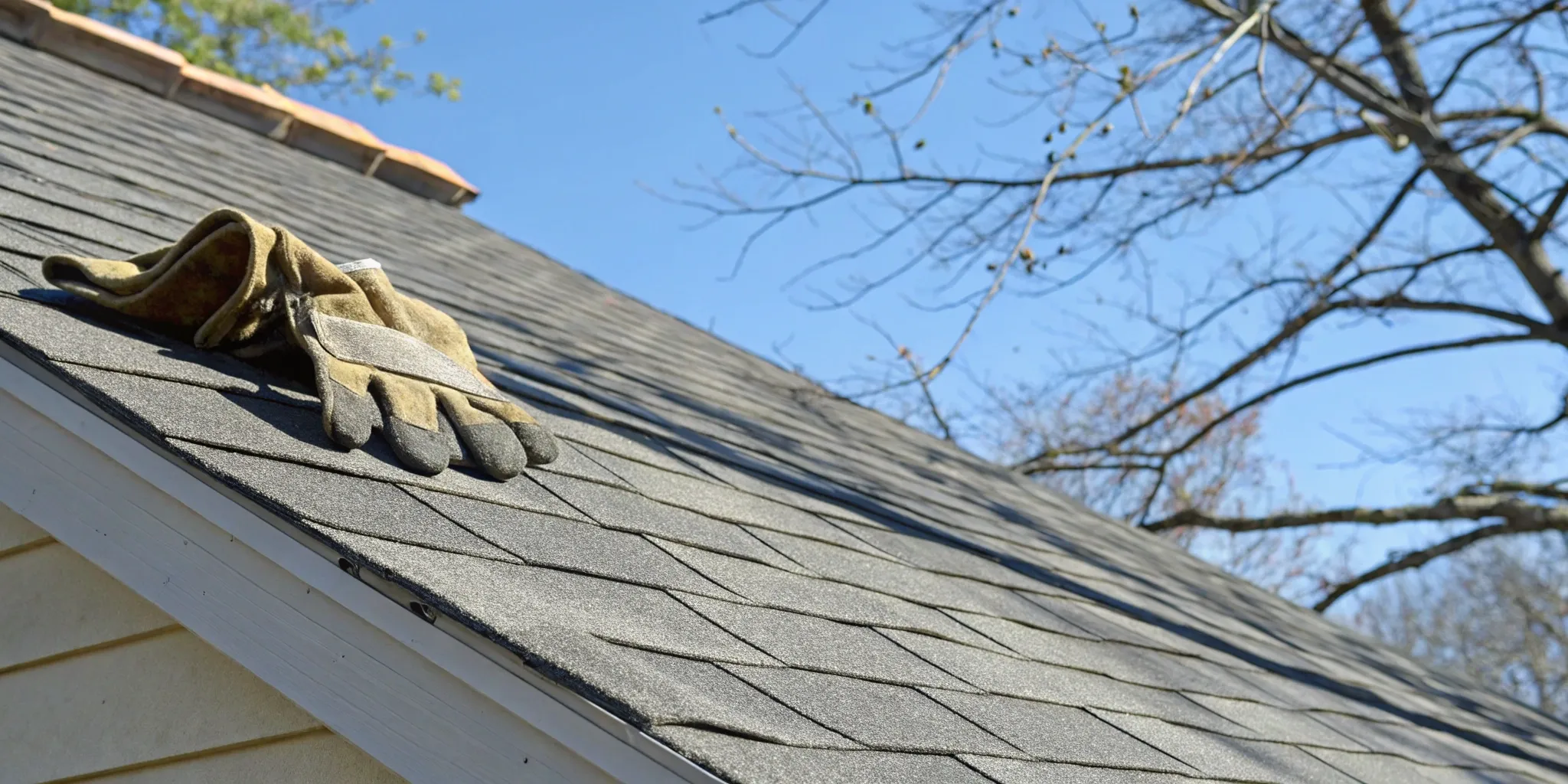



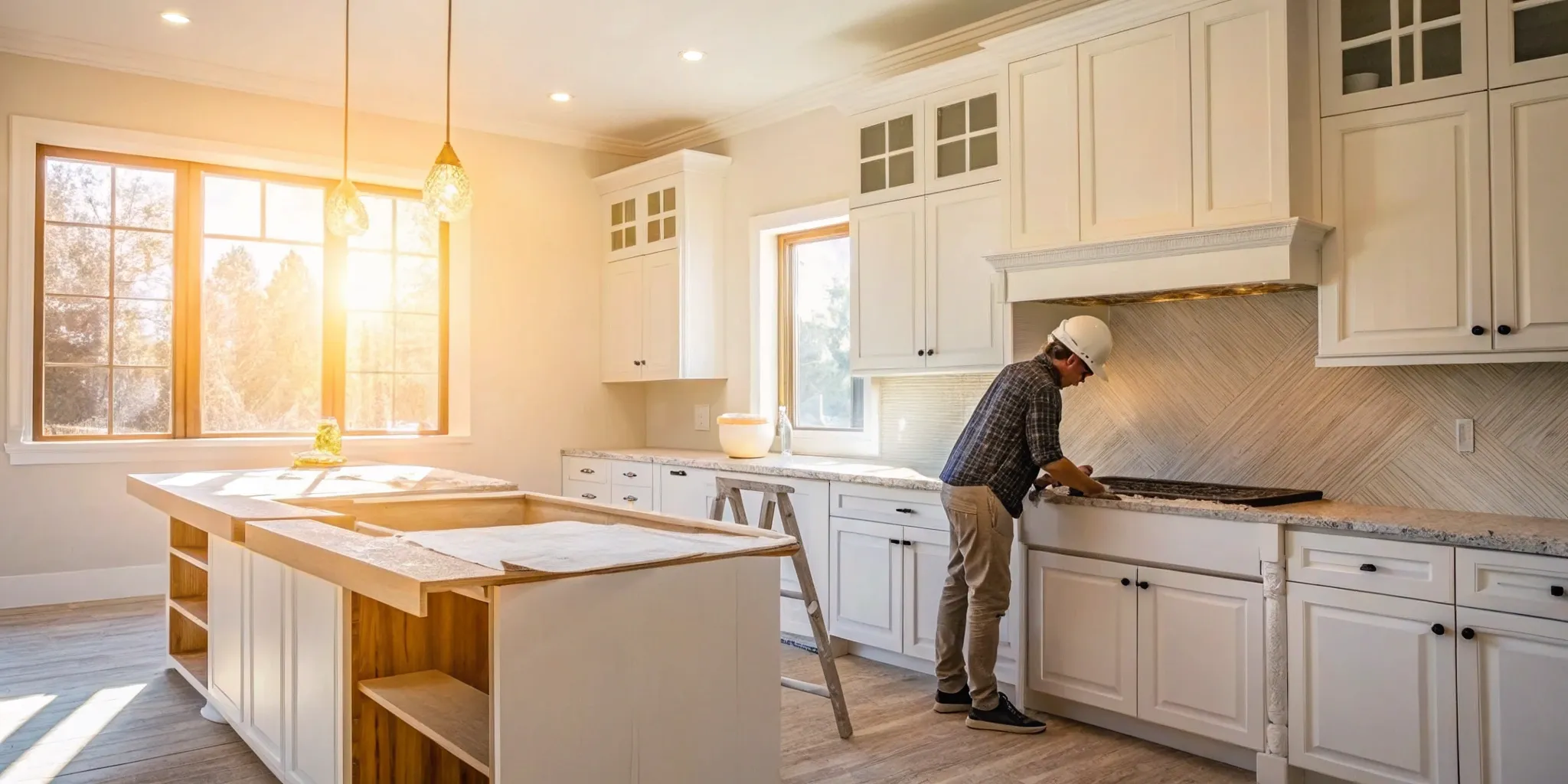
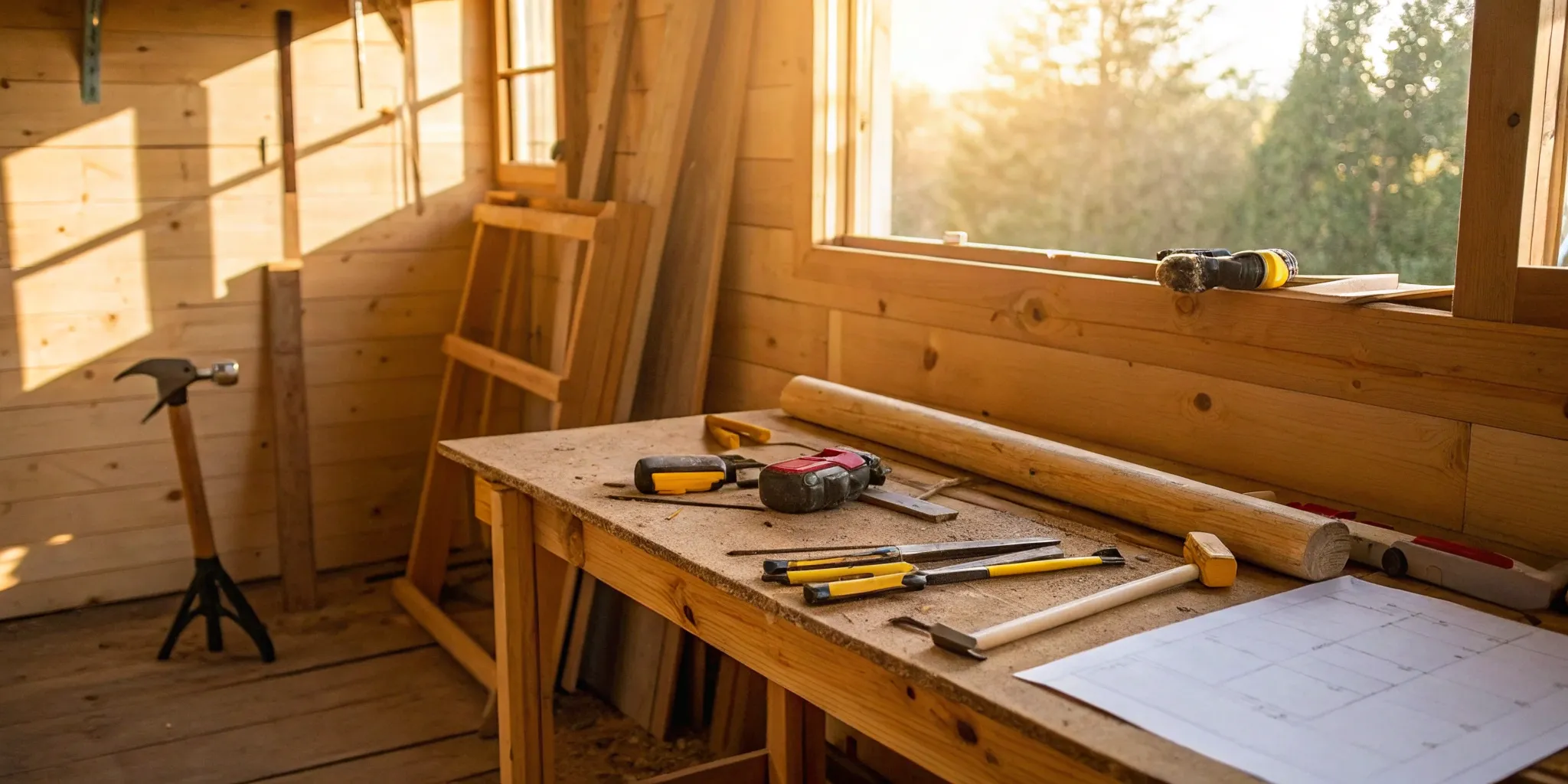

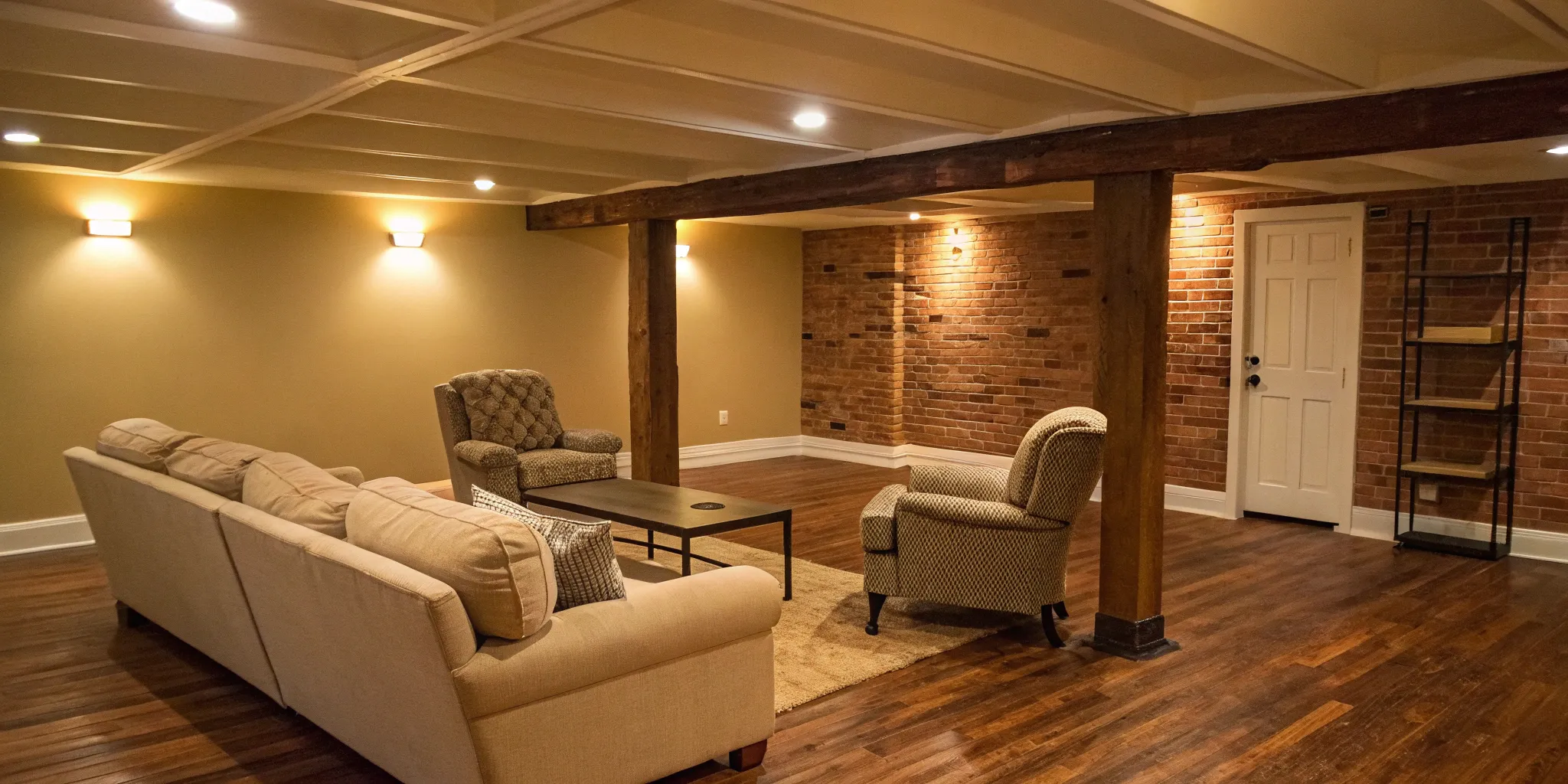

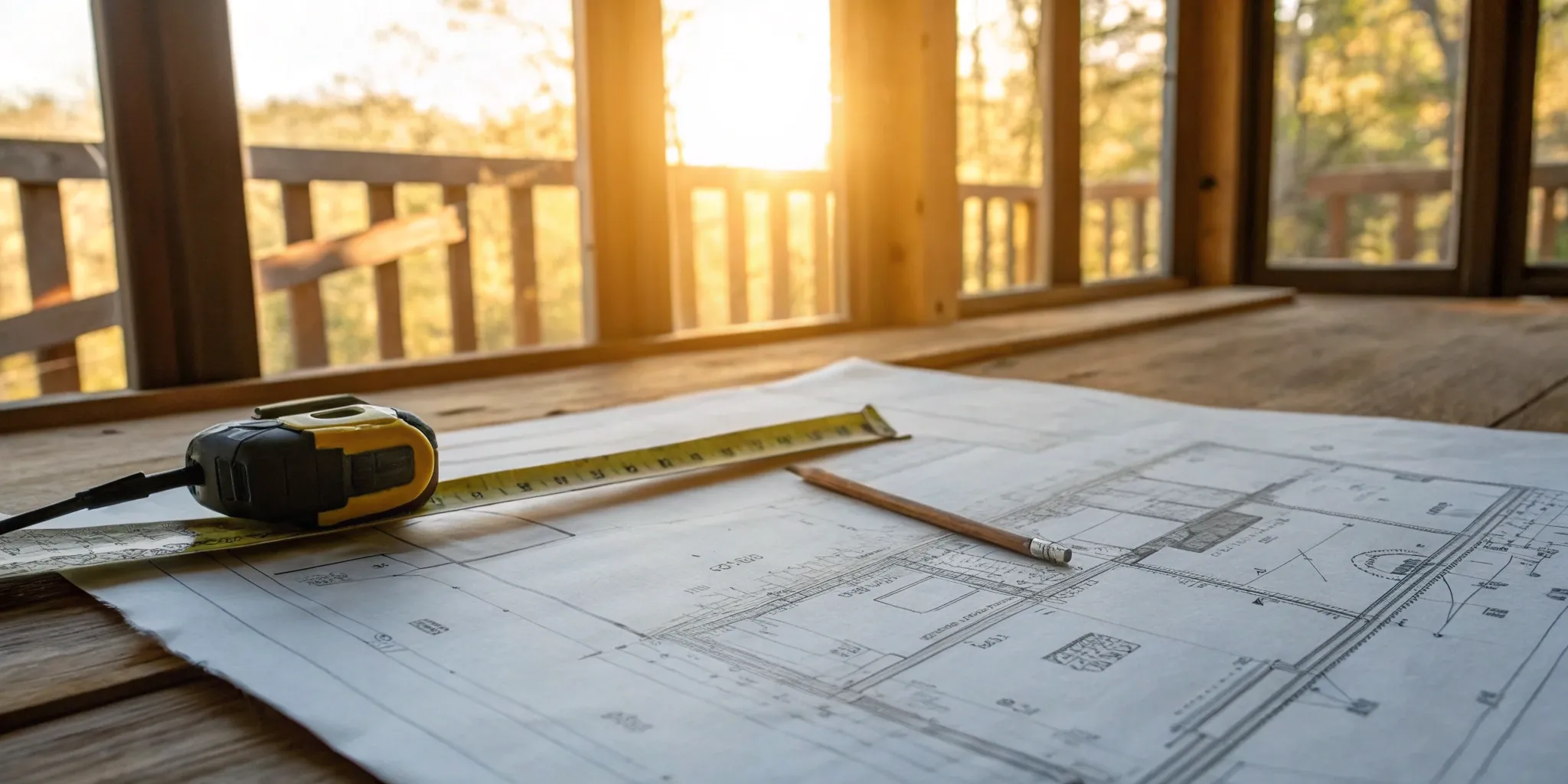
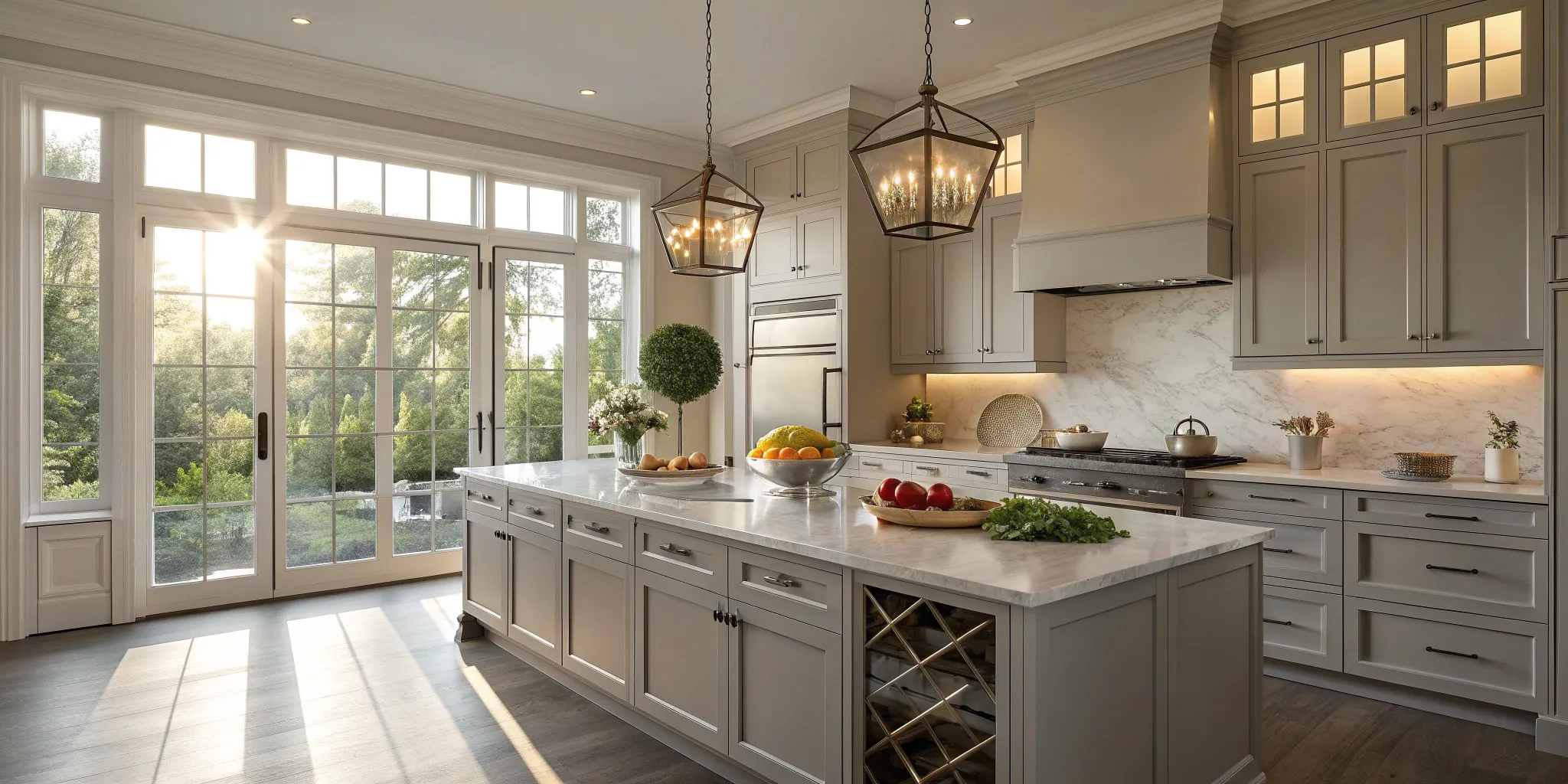


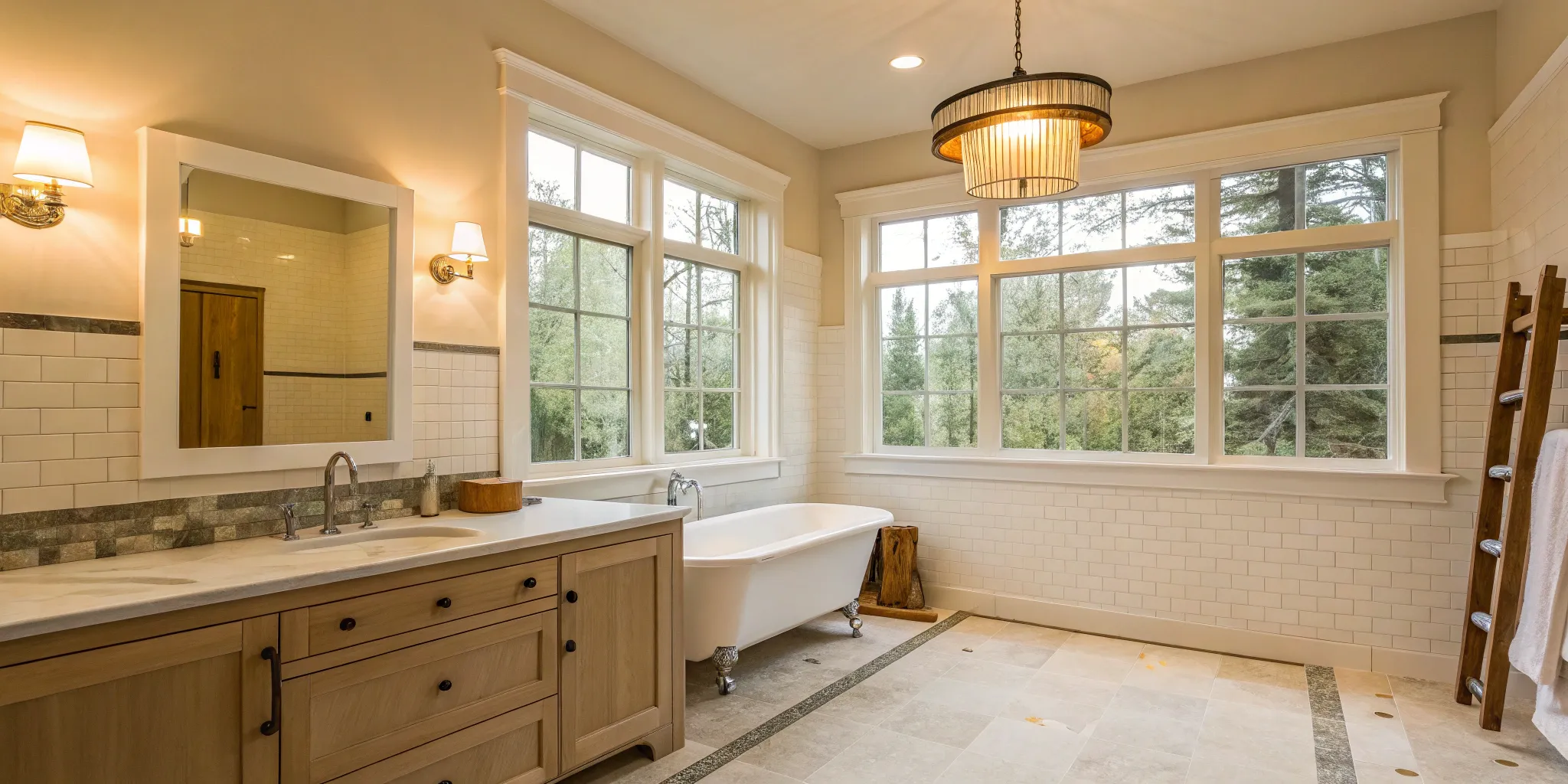
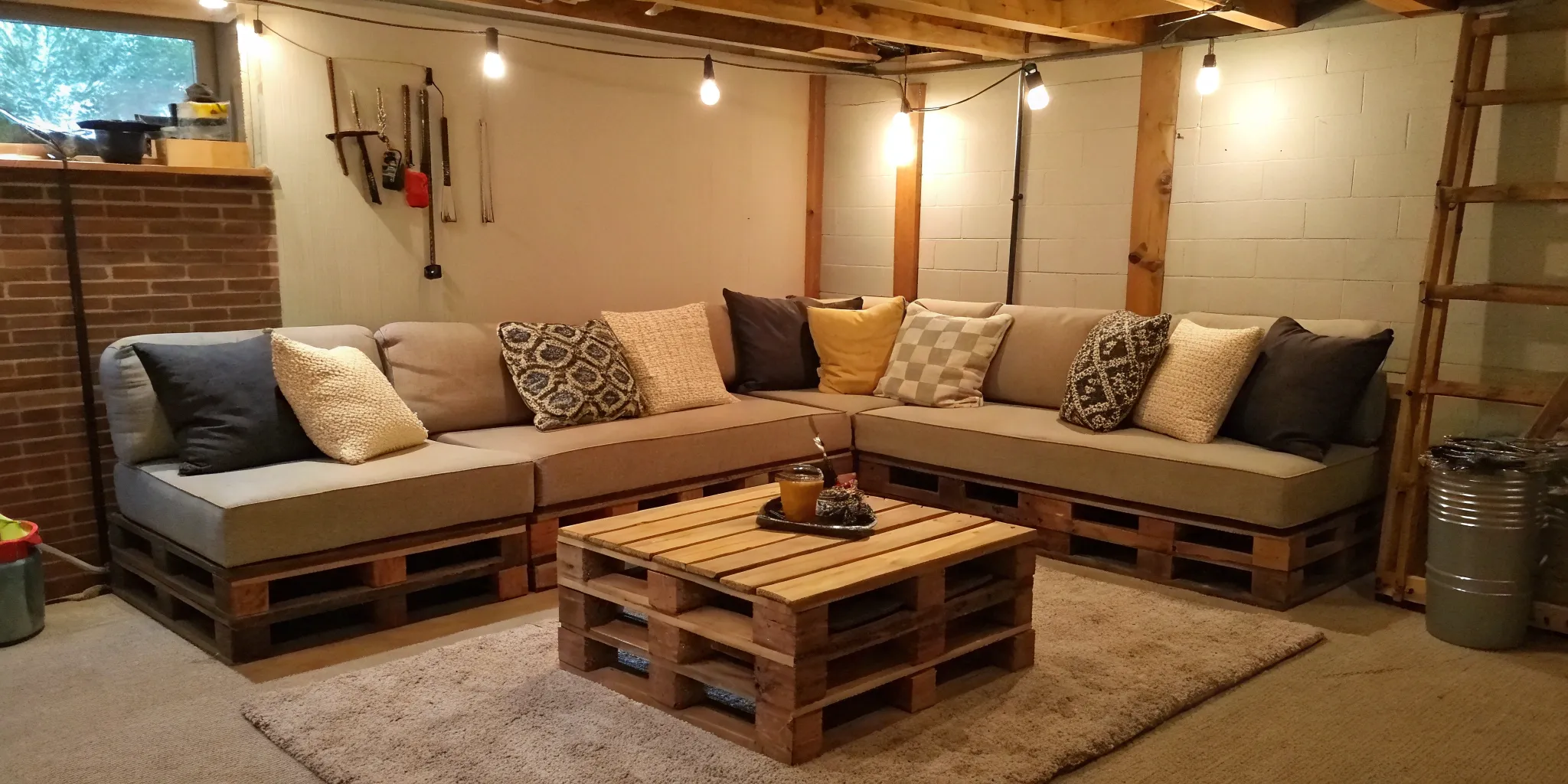


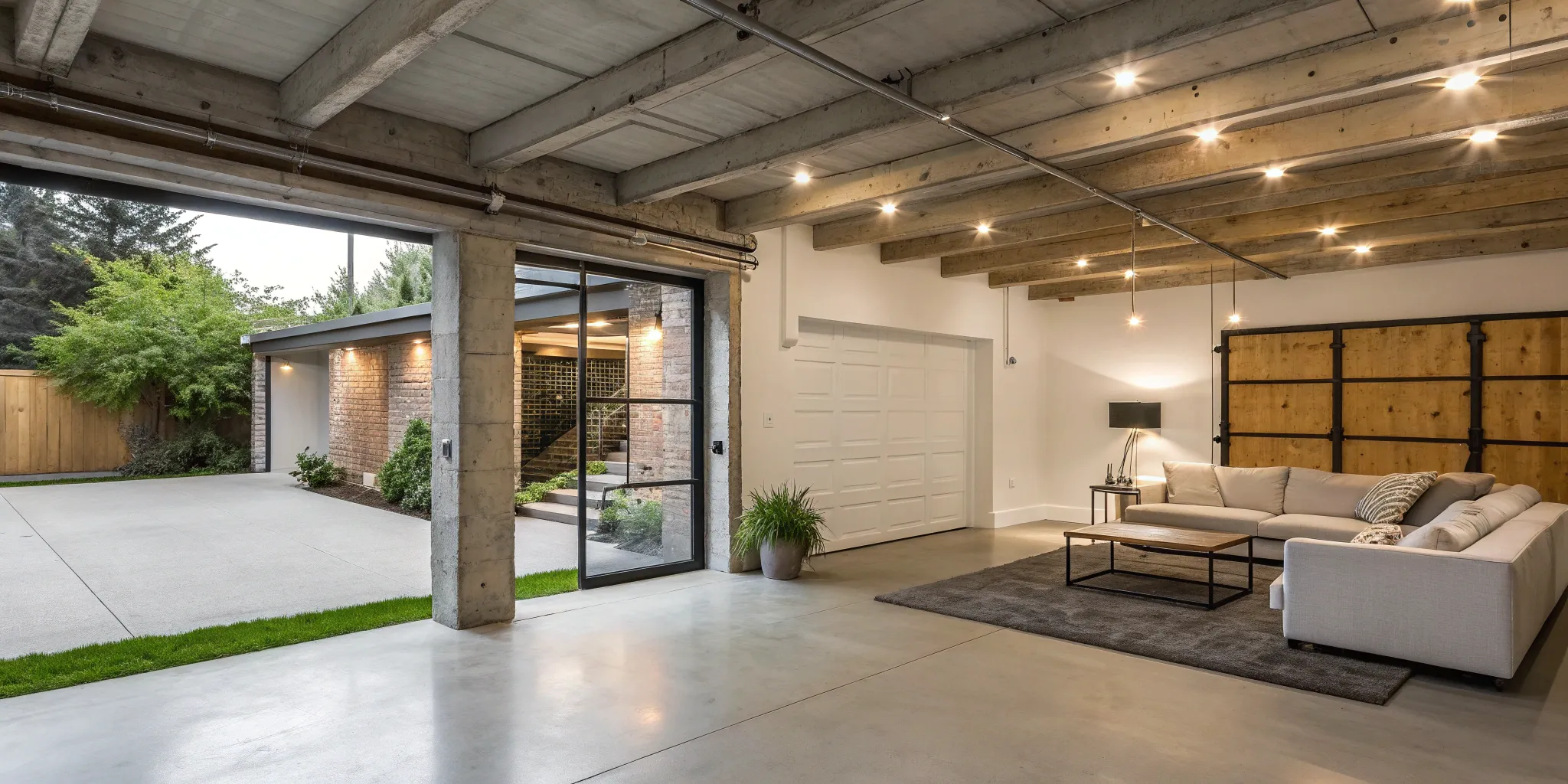

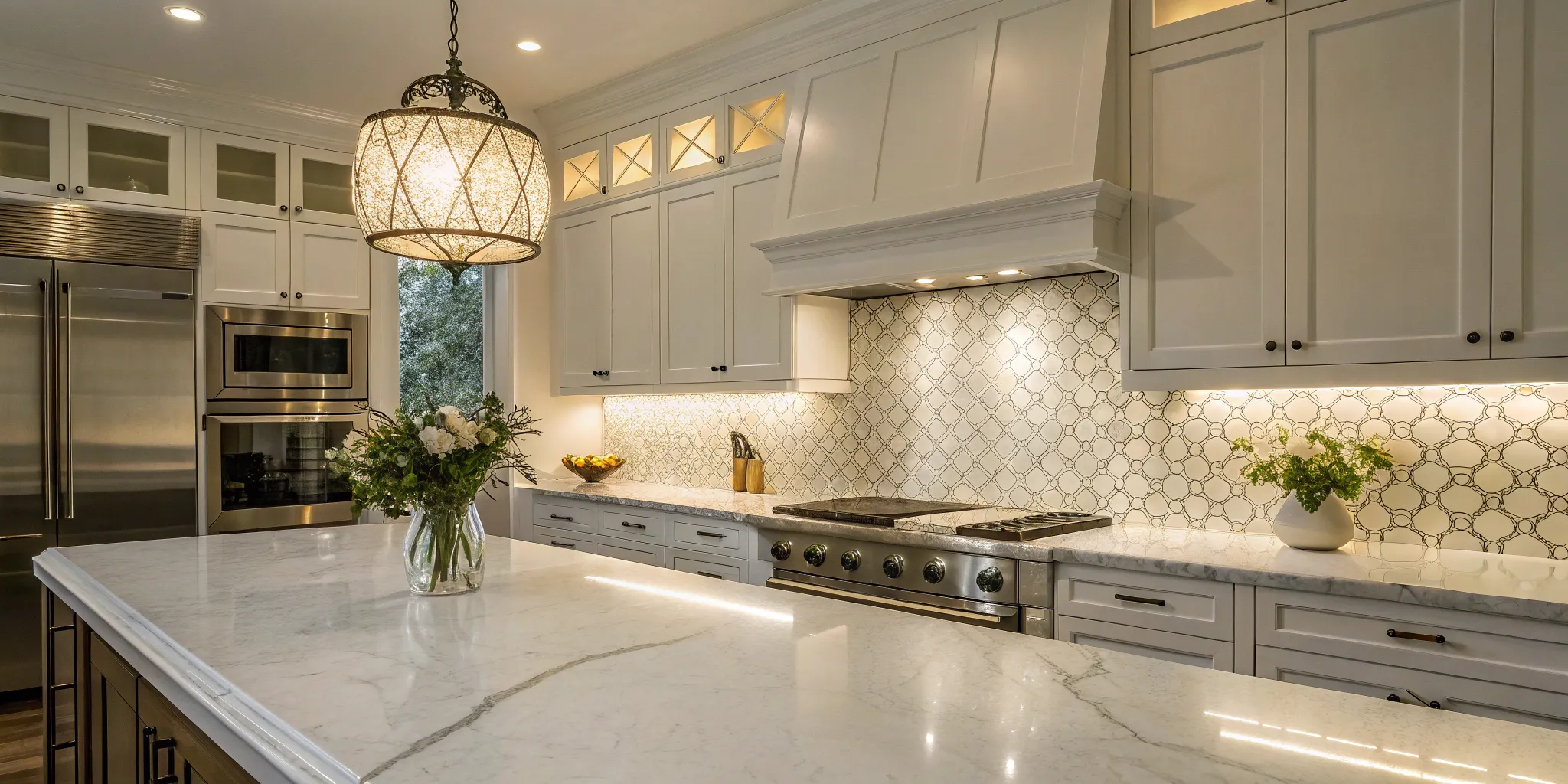
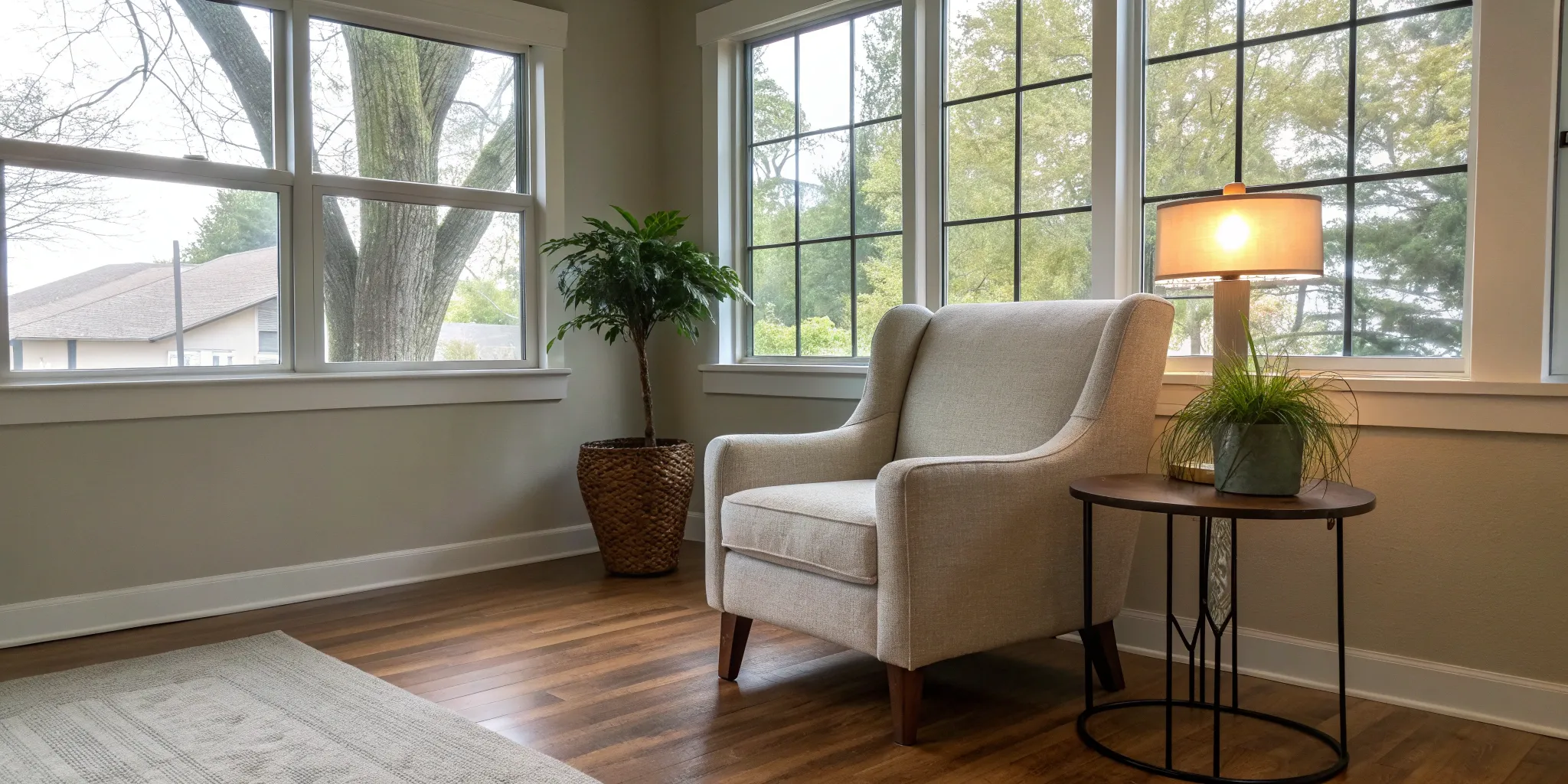
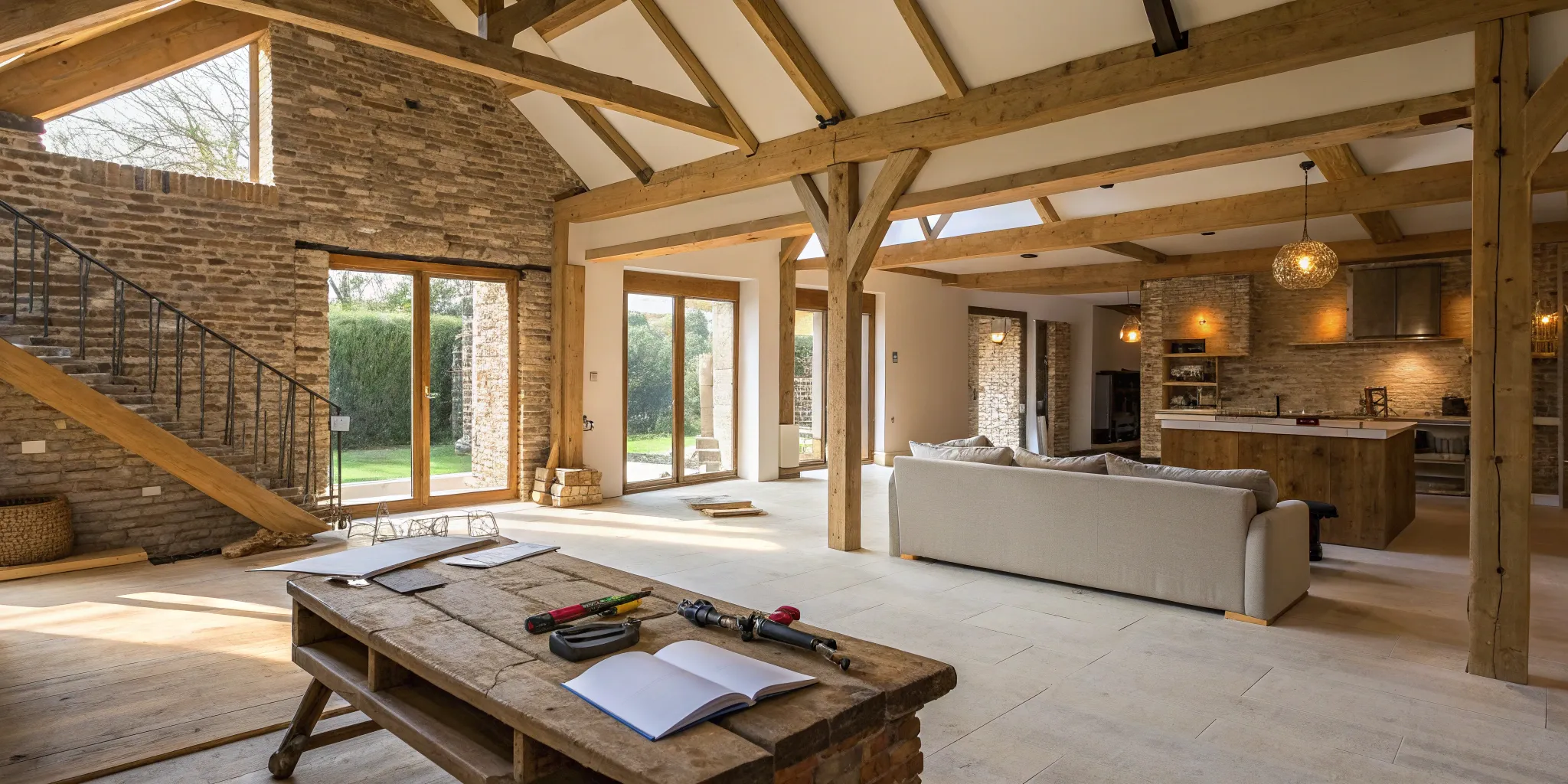







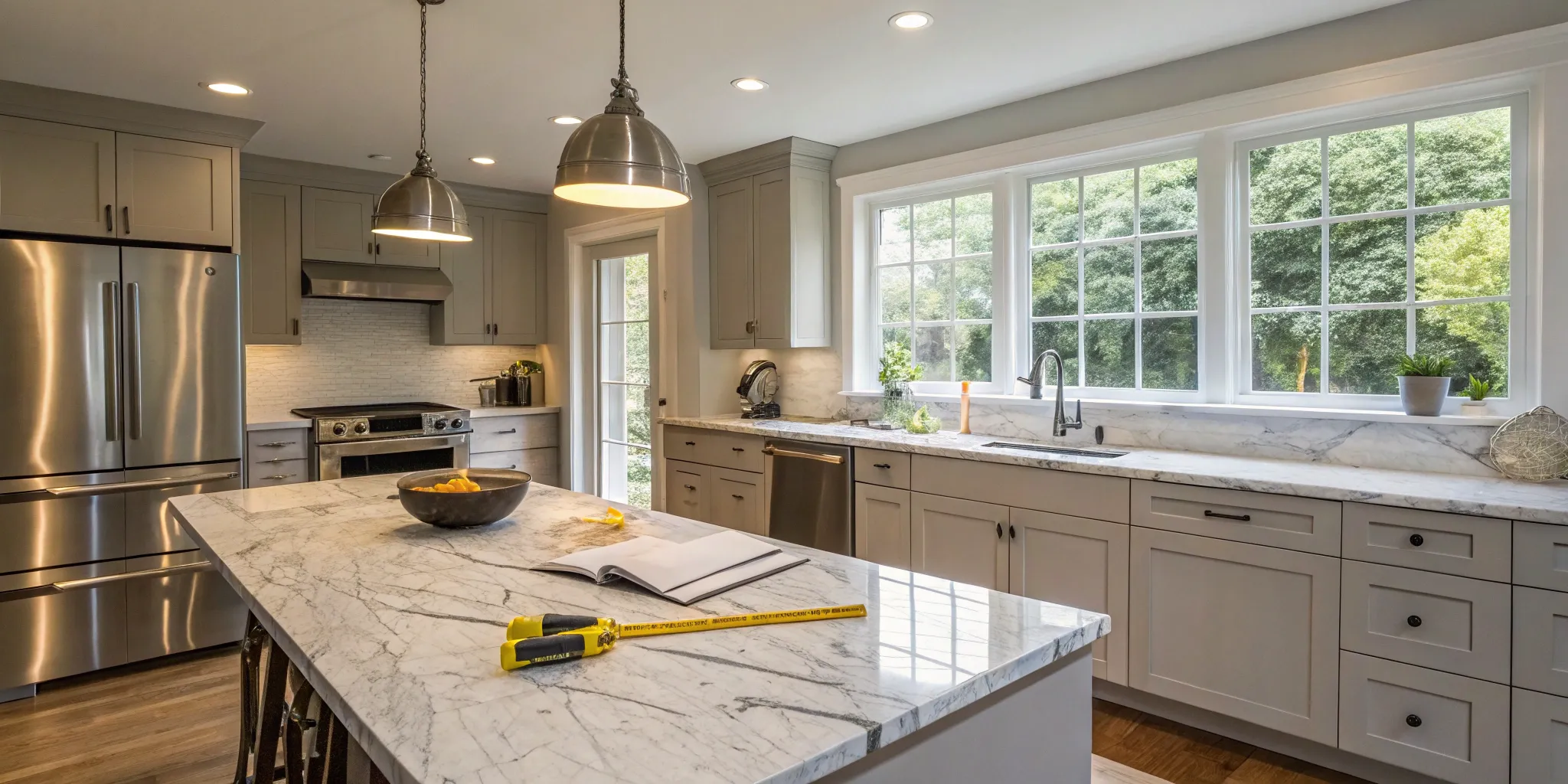












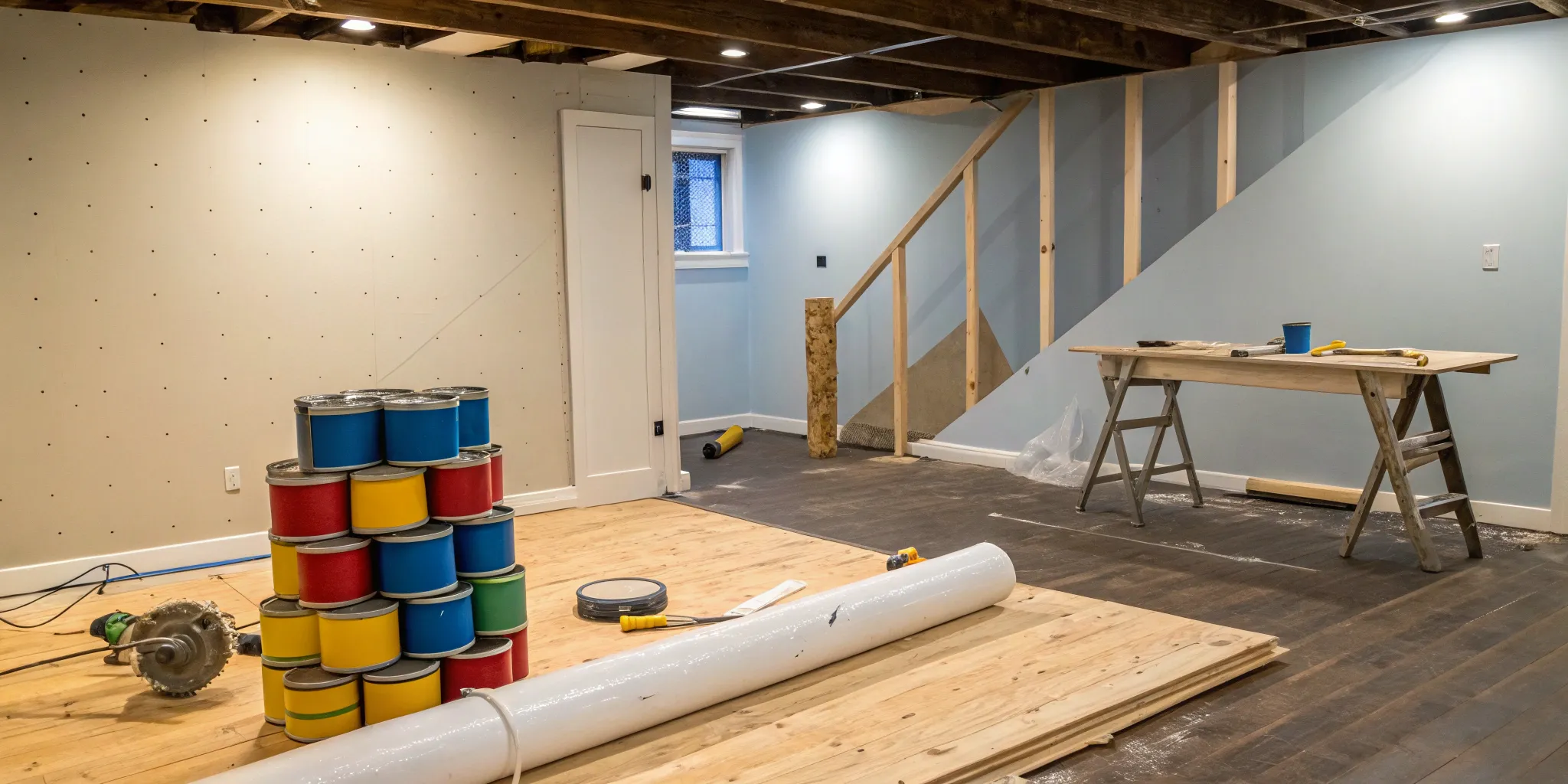


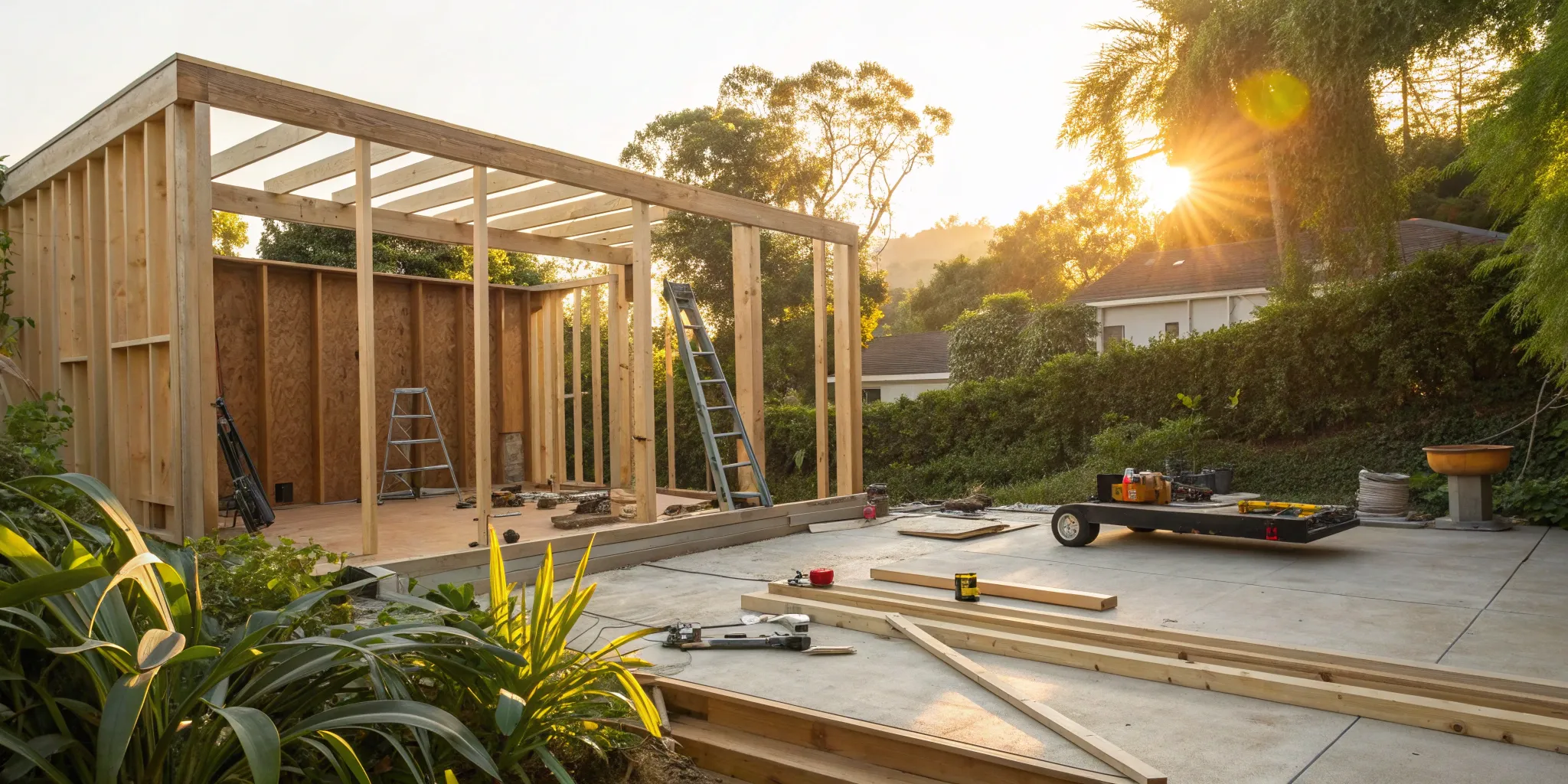
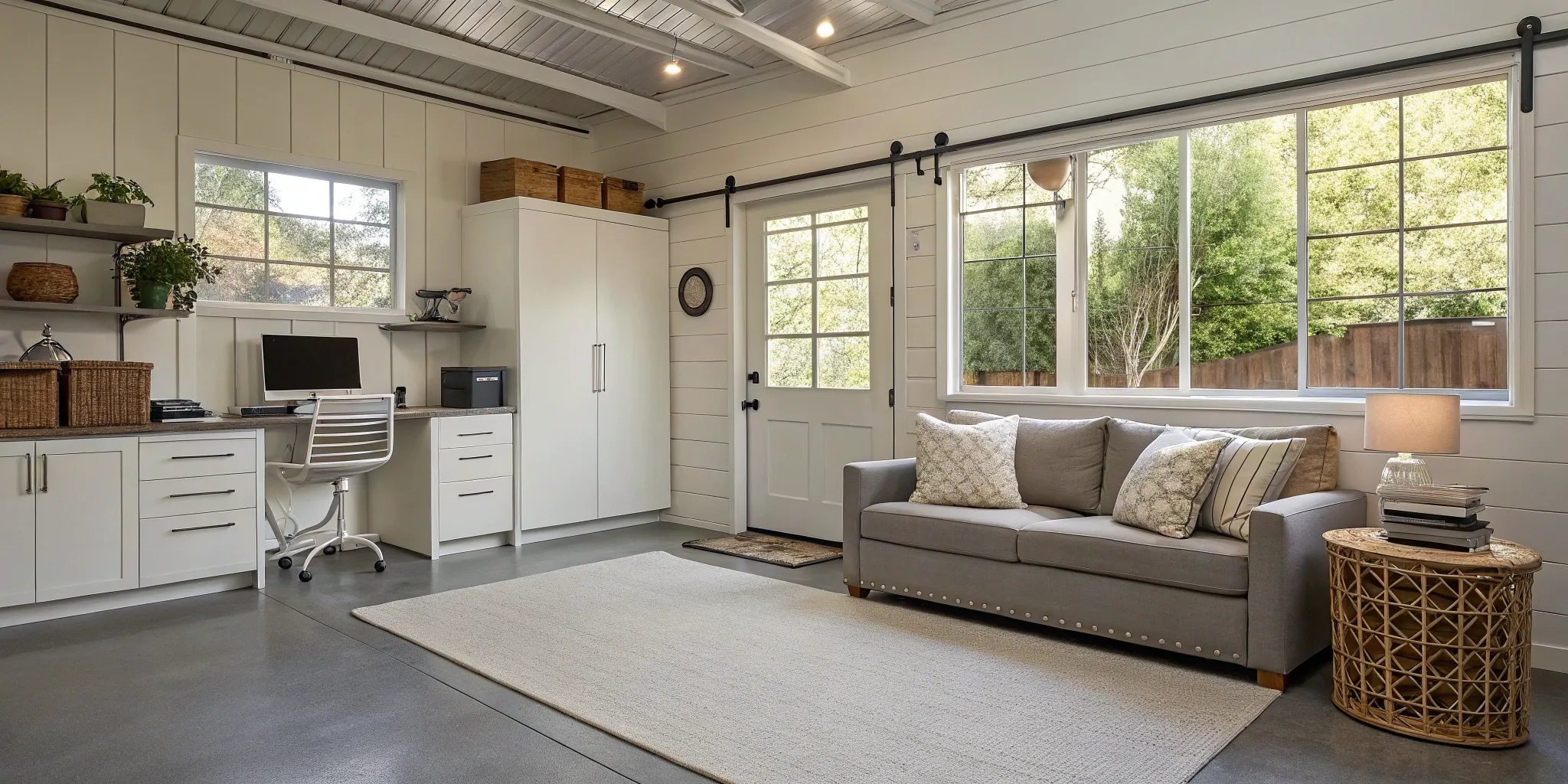

.png)



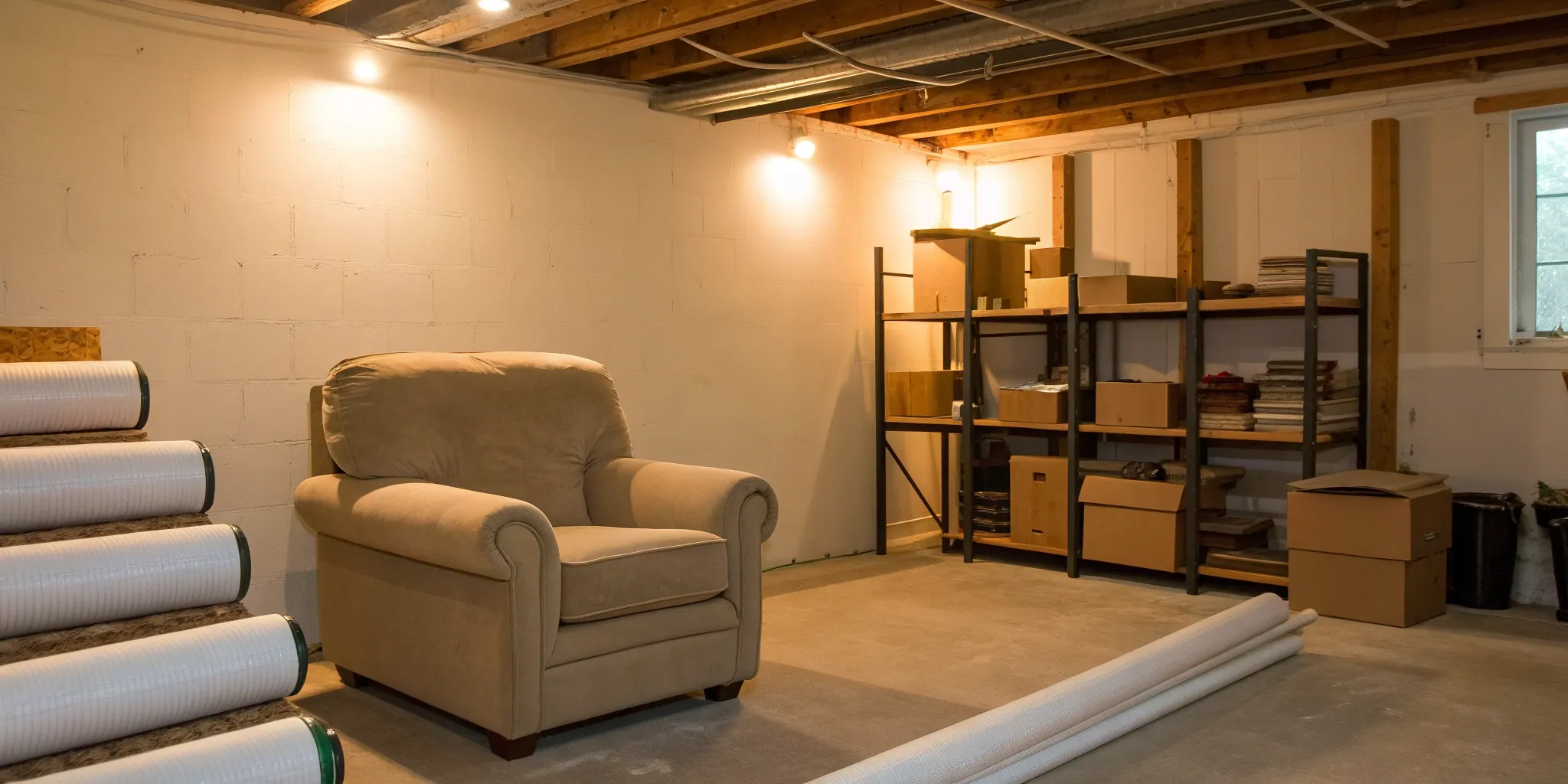








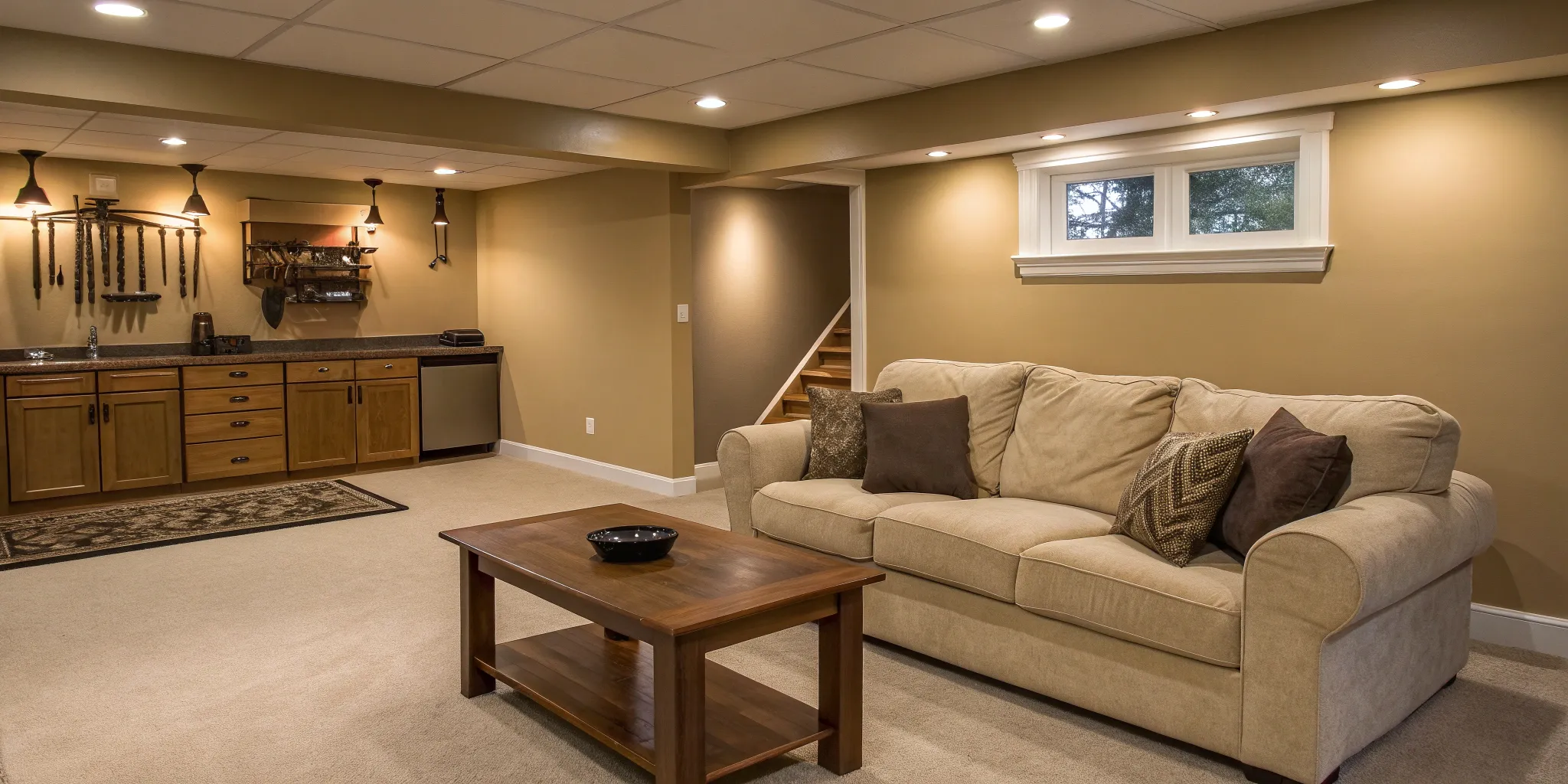



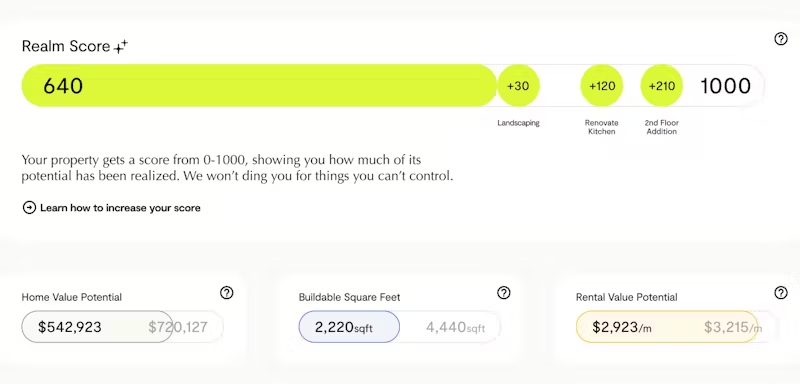


.avif)













